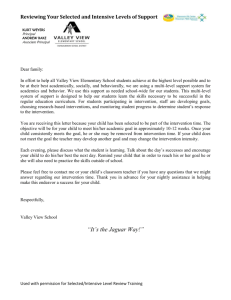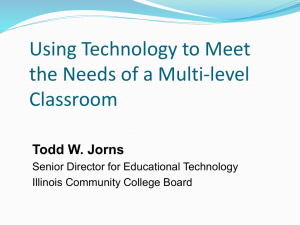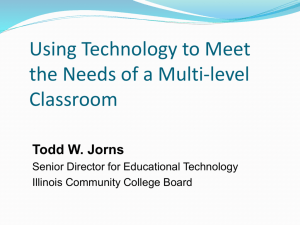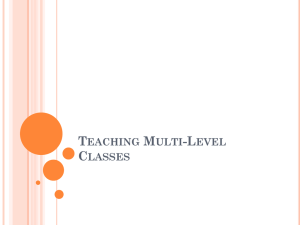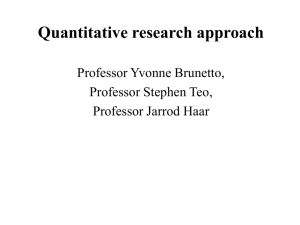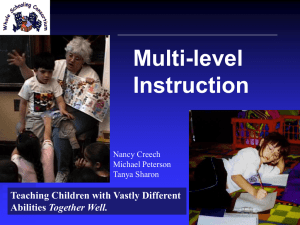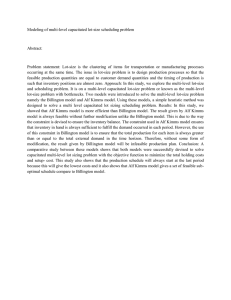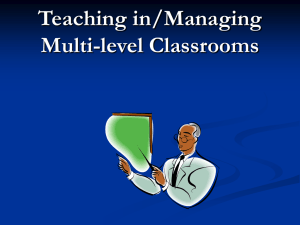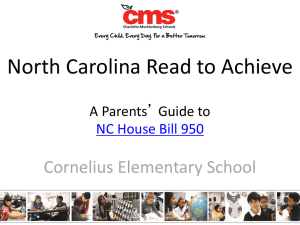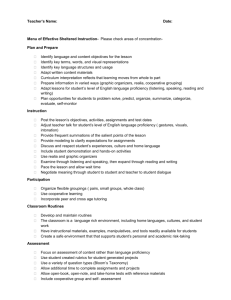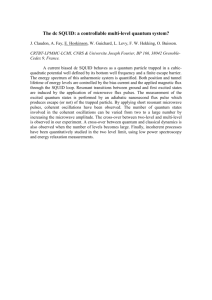Mixed Ability Classroom(Word 20KB)
advertisement
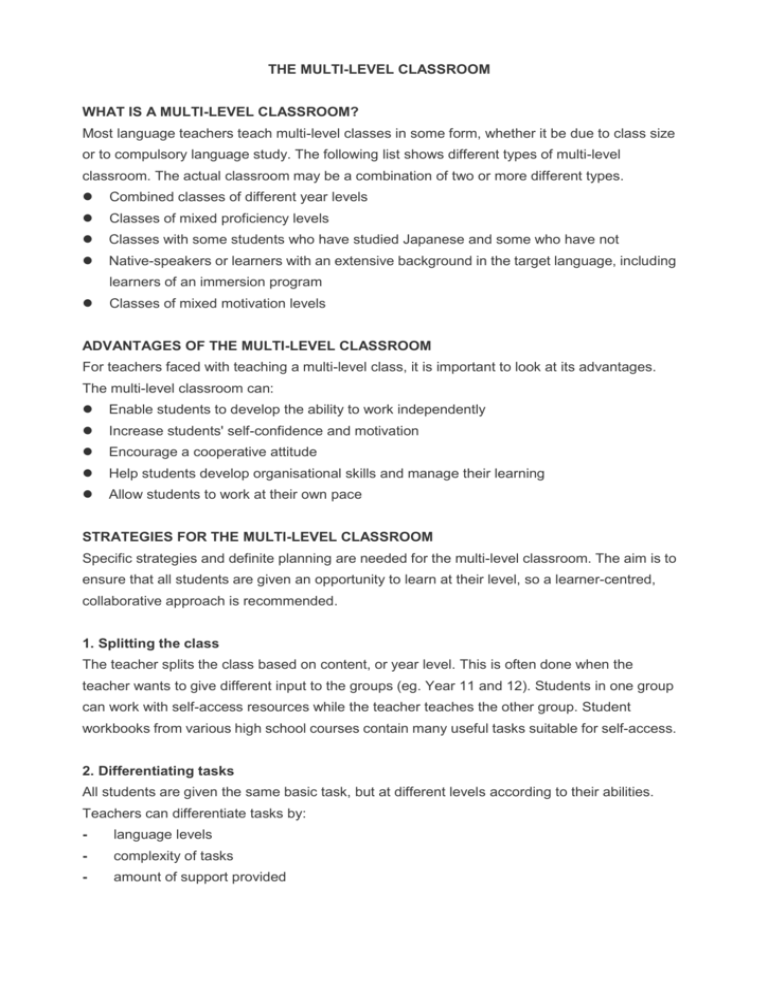
THE MULTI-LEVEL CLASSROOM WHAT IS A MULTI-LEVEL CLASSROOM? Most language teachers teach multi-level classes in some form, whether it be due to class size or to compulsory language study. The following list shows different types of multi-level classroom. The actual classroom may be a combination of two or more different types. Combined classes of different year levels Classes of mixed proficiency levels Classes with some students who have studied Japanese and some who have not Native-speakers or learners with an extensive background in the target language, including learners of an immersion program Classes of mixed motivation levels ADVANTAGES OF THE MULTI-LEVEL CLASSROOM For teachers faced with teaching a multi-level class, it is important to look at its advantages. The multi-level classroom can: Enable students to develop the ability to work independently Increase students' self-confidence and motivation Encourage a cooperative attitude Help students develop organisational skills and manage their learning Allow students to work at their own pace STRATEGIES FOR THE MULTI-LEVEL CLASSROOM Specific strategies and definite planning are needed for the multi-level classroom. The aim is to ensure that all students are given an opportunity to learn at their level, so a learner-centred, collaborative approach is recommended. 1. Splitting the class The teacher splits the class based on content, or year level. This is often done when the teacher wants to give different input to the groups (eg. Year 11 and 12). Students in one group can work with self-access resources while the teacher teaches the other group. Student workbooks from various high school courses contain many useful tasks suitable for self-access. 2. Differentiating tasks All students are given the same basic task, but at different levels according to their abilities. Teachers can differentiate tasks by: - language levels - complexity of tasks - amount of support provided 3. Focusing on abilities/skills other than language Tasks and activities incorporating other abilities such as mathematics, problem solving, using memory or general knowledge can motivate students with lower proficiency levels, as they allow these students to participate by using strengths other than language. Also, including an element of chance in a game involving competition gives everyone the opportunity to win. 4. Using group/pair work - groups of mixed proficiency - groups of similar proficiency 5. Peer tutoring When students have mixed proficiency level in a pair/group work situation, students are encouraged to learn and help each other. 6. Utilising teaching assistants / Native speakers in the community EXAMPLE TASKS Teachers need not use tasks and activities as they are, but can change them to suit their needs, and can apply the ideas in them to other language items. Skits allow students to take on roles according to their ability. Board games such as がっこうすごろく can be played cooperatively, with students choosing to answer questions of varying levels of difficulty. Card Games and activities using cards offer a good opportunity for differentiation. In groups with students of mixed ability, more advanced students can perform the harder tasks, eg. reading from the cards while the others listen and comprehend, as in 3 hint games and karuta. Alternatively, students can form groups of similar levels of ability, and the same or different games can be played, with card sets of different language levels appropriate to the group's needs. Cross-curriculum activities provide students of mixed ability the chance to participate in the same activity when the focus is on skills other than language. For example, a resource focused on mathematics. Other focuses could be memorisation, general knowledge, dramatic ability and so on.
